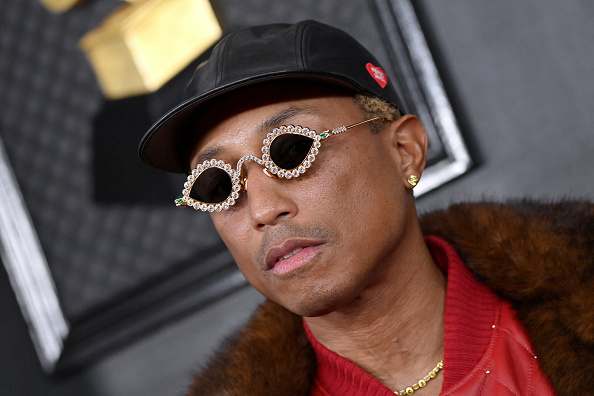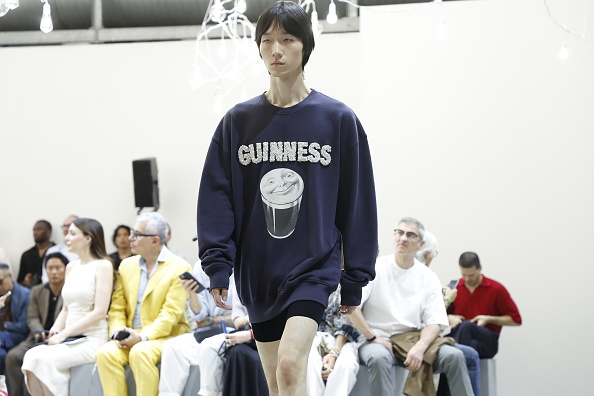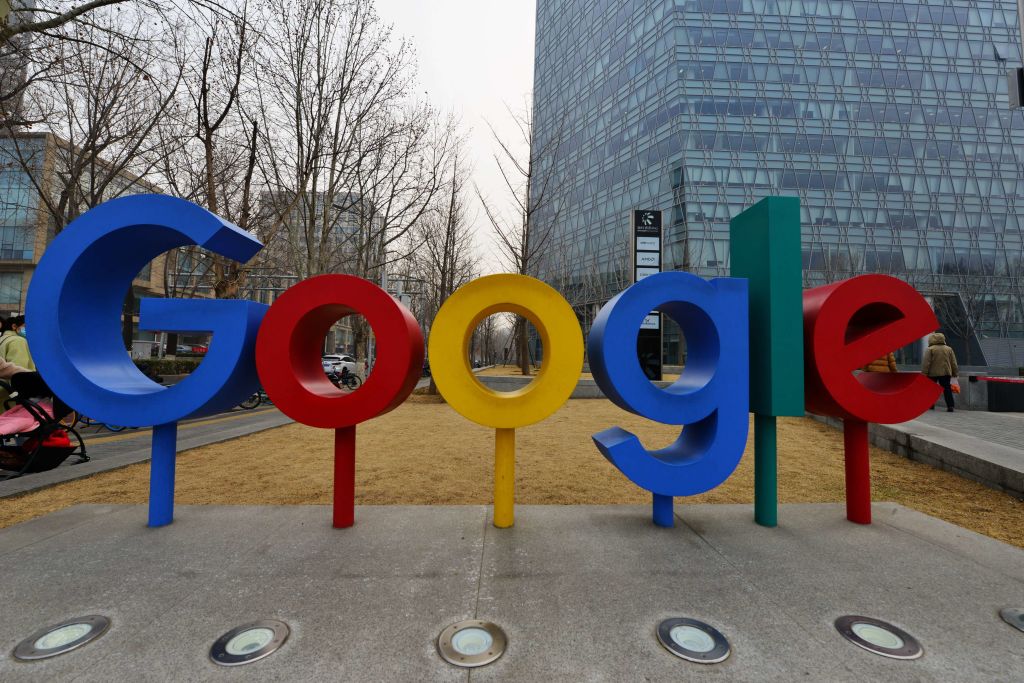Louis Vuitton Taps Pharrell Williams as Next Menswear Designer
The celebrity producer will fill Virgil Abloh’s vacant role and become creative director, the company said Tuesday
Louis Vuitton has hired Pharrell Williams, the music producer and streetwear entrepreneur, to be its creative director of menswear, the company said.
Mr. Williams, 49, assumes the role previously held by Virgil Abloh, who died in November 2021. Mr. Abloh was the first Black American to be appointed as the head designer at a European luxury house. Mr. Williams, a native of Virginia Beach, Va., who rose to prominence in the late 1990s as a part of hip-hop production duo the Neptunes, is now the second.
The first collection of Mr. Williams’s designs will be shown this June at men’s fashion week in Paris, the company said in a statement.
“I am glad to welcome Pharrell back home,” said Pietro Beccari, Louis Vuitton’s chairman and CEO, of Mr. Williams’s early-aughts collaborations with the company. “His creative vision beyond fashion will undoubtedly lead Louis Vuitton towards a new and very exciting chapter.”
Mr. Williams and Mr. Abloh had a longstanding relationship and shared admiration for each other. In a 2017 interview with the Journal, Mr. Abloh said Mr. Williams was one of his five ideal dinner companions. When Mr. Abloh died, Mr. Williams tweeted that his heart was broken, calling his friend “a kind, generous, thoughtful creative genius.” Days after Mr. Abloh’s death, Mr. Williams sat in the front row at the Louis Vuitton show in Miami.
At Louis Vuitton, fusing heritage and hype has been a successful play on its men’s side for several years. It collaborated with cult streetwear label Supreme in 2017, and hired Mr. Abloh as its menswear designer the following year. In collections that melded dramatic, avant-garde tailoring with high-end hoodies and sneakers, Mr. Abloh both appealed to the brand’s entrenched big-money clientele and brought in a younger, splashier consumer.
Now, the crown jewel of LVMH Moët Hennessy Louis Vuitton SA looks to extend a major run of growth that has propelled LVMH to the largest stock-market valuation in Europe—and turned Bernard Arnault, the conglomerate’s chairman and CEO, into the world’s richest person, recently outdistancing Elon Musk.
The Wall Street Journal first reported Mr. Williams and LVMH were in talks early Tuesday.
While Mr. Abloh’s profile exploded over the course of his three years at Vuitton, ultimately making him one of the most recognisable fashion designers in the world, Mr. Williams would assume the position as a genuine celebrity already—one who has been a judge on “The Voice,” voiced a character in “Sing 2” and racked up two Oscar nominations, 13 Grammy awards and a bevy of number-one singles.
LVMH’s strategy of aligning with splashy, big-name creatives contrasts with the more traditional route to hiring recently taken by Kering SA, one of its largest luxury industry rivals. In late January, Gucci, Kering’s flagship brand, named Sabato de Sarno, a little-known Italian designer who previously worked at Valentino SpA, as its new creative director.
Mr. Williams, meanwhile, is best known as a music hitmaker, responsible for chart-conquering earworms like “Happy” and “Blurred Lines”—but nevertheless has a lengthy résumé as an apparel entrepreneur.
He arrives at a highflying time for Louis Vuitton. It took the fashion house 164 years to become the luxury industry’s first $10 billion brand back in 2018, but it doubled that figure in four years. Analysts say that $20 billion in revenue makes it the biggest luxury brand in the world.
Still, there are new economic headwinds for the company and the industry. Many analysts are expecting an economic softening in key markets, including the U.S. and Europe. It is also a period of change at Louis Vuitton directly. This month, Chief Executive Michael Burke and Executive Vice President Delphine Arnault, Mr. Arnault’s daughter, handed off leadership of the brand. Taking over Louis Vuitton is Italian executive Mr. Beccari, the outgoing boss at Dior.
In one of his first forays in fashion in the early 2000s, well into his career as a pop megaproducer, Mr. Williams paired with Japanese fashion icon Nigo, who is now the creative director of Kenzo, another brand under the LVMH umbrella, to found the pioneering streetwear label Billionaire Boys Club as well as a skateboarding-inspired shoe brand, Ice Cream.
A 2005 clip shows a young Mr. Williams at Ice Cream’s Tokyo store, standing beside Nigo, who he affectionately calls “the General.” “Can’t believe it man, like it’s really happening,” said Mr. Williams, staring in awe at a display case of his brand’s lavender and baby-blue sneakers.
Mr. Williams’s earlier forays were lavish and logo-mad, defined by full-zip hoodies splayed with neon-coloured dollar-sign prints, and jewel-tone shoes. Product drops would draw crowds of cool-hunting teens and 20-somethings to the brand’s shops in New York and Japan.
Three years later, in what retrospectively looks like a sign of things to come, Mr. Williams collaborated with Louis Vuitton’s creative director Marc Jacobs on a series of jewellery designs and the blocky aviator-esque “Millionaire” sunglasses. “Vuitton for me is a school,” said Mr. Williams in a 2008 interview discussing his collaboration with Mr. Jacobs. “I’ve just learned a lot being here.” Today, pairs of those sunglasses continue to sell for over $1,000 on resale sites like Grailed.
Further collaborations followed with fashion heavyweights like Diesel, Chanel and Moncler. Mr. Williams has also worked with Adidas for nearly a decade on a co-branded line of clothes and shoes, including the sock-esque NMD Hu sneakers with New Age-y words like “Breathe,” “Clouds” and “Body” stitched along the front.
In the past few years, Mr. Williams has joined the rush of celebrities jumping in to launch skin-care products with the brand Humanrace, selling $36 “Rice Powder” cleansers and $52 “Ozone Body Protection” sunscreen.
Yet his largest impact in the fashion world is likely his own forward-looking choices in attire, even if he’s felt reticent about that role in the past. “It embarrasses me a bit to be a figure in fashion,” he told the Journal in 2014. “I think everyone is interested in what they put on, even if you dress conservatively.”
In 2015 he was awarded the Fashion Icon Award from the Council of Fashion Designers of America, appearing on stage to receive the award in a blue leather jacket and worn-in jeans. “No one has better style than the everyday American people,” he said during a brief speech. “Why? Because they’re the real thing and they live it everyday. I could never be as cool as them but I’m happy to take notes.”
Most recently, Mr. Williams has been the embodiment of this moment’s boundary-free mixing of streetwear and luxury, wearing both $240 putty-print hoodies from Cactus Plant Flea Market, run by his former assistant Cynthia Lu, and diamond-encrusted Tiffany & Co. sunglasses. (Tiffany & Co. is another LVMH brand.)
Over the past decade, the broader LVMH conglomerate has increasingly collaborated with celebrities, particularly musicians. In 2019, it partnered with Rihanna on Fenty, a luxury apparel line. While that brand fizzled after just two years, LVMH remains part-owner in her Fenty Beauty line, which is booming. Nigo, Pharrell’s longtime collaborator, also moonlights as a music producer and used his debut at Kenzo to tease songs from his 2022 album “I Know Nigo!”
Spanish singer Rosalía performed in January at the Louis Vuitton menswear show, which was created by the house’s men’s design studio, and featured pieces by the New York streetwear designer KidSuper. That partnership, though buzzy, didn’t provide any clarity on the long-term future of Louis Vuitton’s menswear.
Since Mr. Abloh’s death, fervent speculation has swirled about who Louis Vuitton would name to succeed him. Among the many names said to be linked to the job were independent designers like Martine Rose and Grace Wales Bonner.
 Copyright 2020, Dow Jones & Company, Inc. All Rights Reserved Worldwide. LEARN MORE
Copyright 2020, Dow Jones & Company, Inc. All Rights Reserved Worldwide. LEARN MORE
This stylish family home combines a classic palette and finishes with a flexible floorplan
Just 55 minutes from Sydney, make this your creative getaway located in the majestic Hawkesbury region.
As Paris makes its final preparations for the Olympic games, its residents are busy with their own—packing their suitcases, confirming their reservations, and getting out of town.
Worried about the hordes of crowds and overall chaos the Olympics could bring, Parisians are fleeing the city in droves and inundating resort cities around the country. Hotels and holiday rentals in some of France’s most popular vacation destinations—from the French Riviera in the south to the beaches of Normandy in the north—say they are expecting massive crowds this year in advance of the Olympics. The games will run from July 26-Aug. 1.
“It’s already a major holiday season for us, and beyond that, we have the Olympics,” says Stéphane Personeni, general manager of the Lily of the Valley hotel in Saint Tropez. “People began booking early this year.”
Personeni’s hotel typically has no issues filling its rooms each summer—by May of each year, the luxury hotel typically finds itself completely booked out for the months of July and August. But this year, the 53-room hotel began filling up for summer reservations in February.
“We told our regular guests that everything—hotels, apartments, villas—are going to be hard to find this summer,” Personeni says. His neighbours around Saint Tropez say they’re similarly booked up.
As of March, the online marketplace Gens de Confiance (“Trusted People”), saw a 50% increase in reservations from Parisians seeking vacation rentals outside the capital during the Olympics.
Already, August is a popular vacation time for the French. With a minimum of five weeks of vacation mandated by law, many decide to take the entire month off, renting out villas in beachside destinations for longer periods.
But beyond the typical August travel, the Olympics are having a real impact, says Bertille Marchal, a spokesperson for Gens de Confiance.
“We’ve seen nearly three times more reservations for the dates of the Olympics than the following two weeks,” Marchal says. “The increase is definitely linked to the Olympic Games.”

Getty Images
According to the site, the most sought-out vacation destinations are Morbihan and Loire-Atlantique, a seaside region in the northwest; le Var, a coastal area within the southeast of France along the Côte d’Azur; and the island of Corsica in the Mediterranean.
Meanwhile, the Olympics haven’t necessarily been a boon to foreign tourism in the country. Many tourists who might have otherwise come to France are avoiding it this year in favour of other European capitals. In Paris, demand for stays at high-end hotels has collapsed, with bookings down 50% in July compared to last year, according to UMIH Prestige, which represents hotels charging at least €800 ($865) a night for rooms.
Earlier this year, high-end restaurants and concierges said the Olympics might even be an opportunity to score a hard-get-seat at the city’s fine dining.
In the Occitanie region in southwest France, the overall number of reservations this summer hasn’t changed much from last year, says Vincent Gare, president of the regional tourism committee there.
“But looking further at the numbers, we do see an increase in the clientele coming from the Paris region,” Gare told Le Figaro, noting that the increase in reservations has fallen directly on the dates of the Olympic games.
Michel Barré, a retiree living in Paris’s Le Marais neighbourhood, is one of those opting for the beach rather than the opening ceremony. In January, he booked a stay in Normandy for two weeks.
“Even though it’s a major European capital, Paris is still a small city—it’s a massive effort to host all of these events,” Barré says. “The Olympics are going to be a mess.”
More than anything, he just wants some calm after an event-filled summer in Paris, which just before the Olympics experienced the drama of a snap election called by Macron.
“It’s been a hectic summer here,” he says.

AFP via Getty Images
Parisians—Barré included—feel that the city, by over-catering to its tourists, is driving out many residents.
Parts of the Seine—usually one of the most popular summertime hangout spots —have been closed off for weeks as the city installs bleachers and Olympics signage. In certain neighbourhoods, residents will need to scan a QR code with police to access their own apartments. And from the Olympics to Sept. 8, Paris is nearly doubling the price of transit tickets from €2.15 to €4 per ride.
The city’s clear willingness to capitalise on its tourists has motivated some residents to do the same. In March, the number of active Airbnb listings in Paris reached an all-time high as hosts rushed to list their apartments. Listings grew 40% from the same time last year, according to the company.
With their regular clients taking off, Parisian restaurants and merchants are complaining that business is down.
“Are there any Parisians left in Paris?” Alaine Fontaine, president of the restaurant industry association, told the radio station Franceinfo on Sunday. “For the last three weeks, there haven’t been any here.”
Still, for all the talk of those leaving, there are plenty who have decided to stick around.
Jay Swanson, an American expat and YouTuber, can’t imagine leaving during the Olympics—he secured his tickets to see ping pong and volleyball last year. He’s also less concerned about the crowds and road closures than others, having just put together a series of videos explaining how to navigate Paris during the games.
“It’s been 100 years since the Games came to Paris; when else will we get a chance to host the world like this?” Swanson says. “So many Parisians are leaving and tourism is down, so not only will it be quiet but the only people left will be here for a party.”
This stylish family home combines a classic palette and finishes with a flexible floorplan
Just 55 minutes from Sydney, make this your creative getaway located in the majestic Hawkesbury region.






















